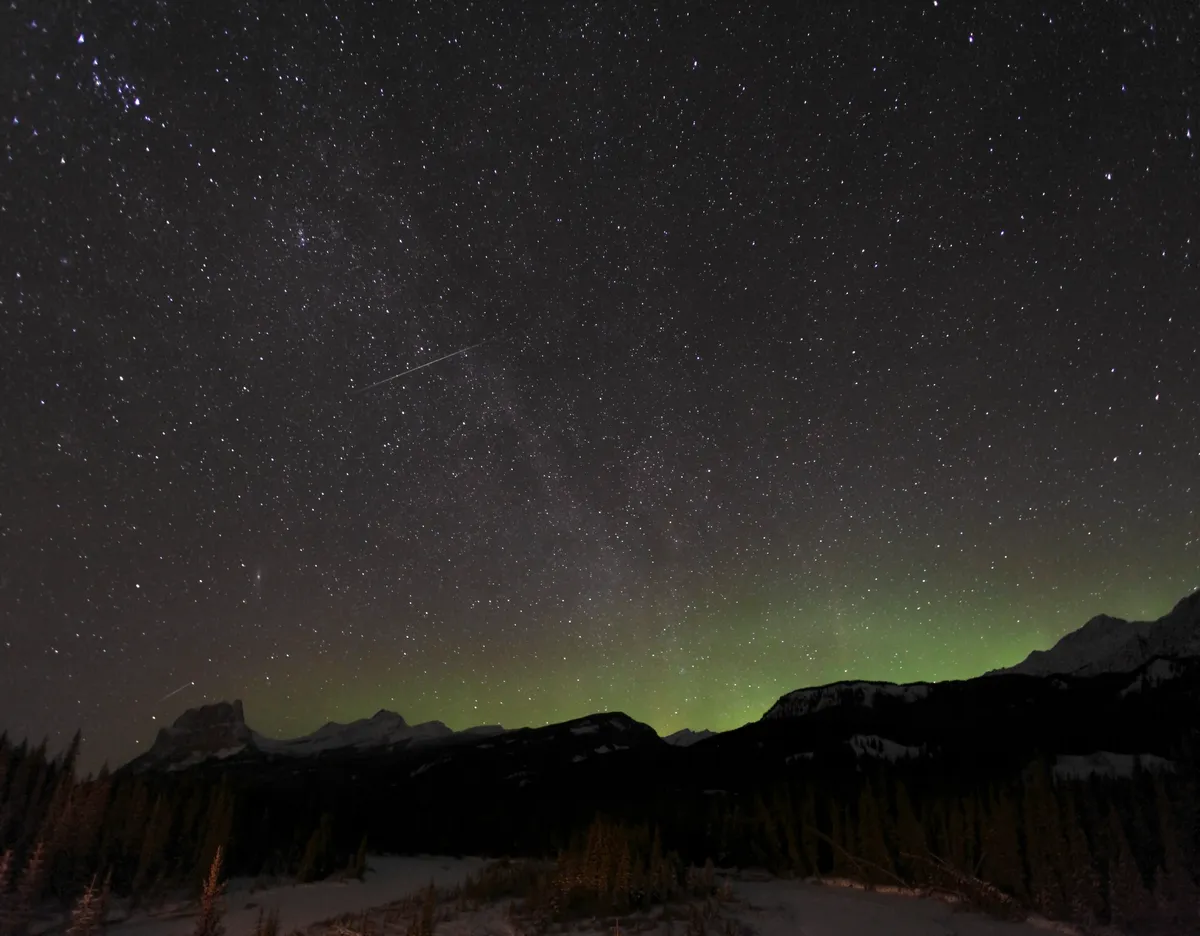The Milky Way is highest during summer and winter, arching from north to south and passing directly overhead, but there is a difference between the summer and winter Milky Way, and it's to do with our Solar System's location in the Galaxy.
Our Galaxy is a vast flattened disc of matter containing more than 200 billion stars that measures around 100,000 lightyears across.
It's shaped like a spiral and is what's known as a spiral galaxy, its bright arms peppered with stars, interlaced with dark clouds of cosmic gas and dust and a pronounced central bulge.
Find out how to see the Milky Way and how to photograph the Milky Way

in from the edge of the Milky Way Galaxy, near the Pleiades and the Orion Nebula
Our Solar System is situated near the galactic plane, nestling within one of the Milky Way's outer spiral arms, around two-thirds of the way from the centre of the Galaxy to the edge.
With a few exceptions, only the nearest stars within our spiral arm are visible to the unaided eye. Stars much further away blend into a glowing haze.
Since most of the Galaxy’s stars and nebulae lie along the galactic plane, this multitude of distant stars appears as a bright misty band called the Milky Way.
You can see it under really dark skies, and it's a favoured target for astrophotographers as it looks so impressive.
Let's take a look at the key differences between the summer and winter Milky Way, and what causes them.
Summer Milky Way

The summer Milky Way can be traced from Cassiopeia in the north, through Cygnus overhead and down to Sagittarius low in the south – the galactic centre and the Milky Way’s brightest section.
Sagittarius is a region rich in stars and nebulae because during summer we’re looking inwards, towards the Milky Way's heart.
The bright centre itself is hidden by dust clouds that appear as dark silhouettes against the glowing galactic bulge.
The summer Milky Way is so bright that even those observing from light-polluted urban areas might glimpse it on a clear, moonless night.
Indeed, it's often remarked that the Milky Way appears like steam rising out of the Teapot asterism, which is located in Sagittarius.
Winter Milky Way

The winter Milky Way, on the other hand, extends from Cepheus in the north, through Perseus and Auriga overhead, down to Canis Major in the south.
When we view the winter Milky Way, we’re looking out of the Galaxy (at regions that are further out from the galactic centre than the spiral arm we’re in).
Unlike the summer Milky Way, in winter this region is less densely populated by stars and nebulae and thus less spectacular to view.

